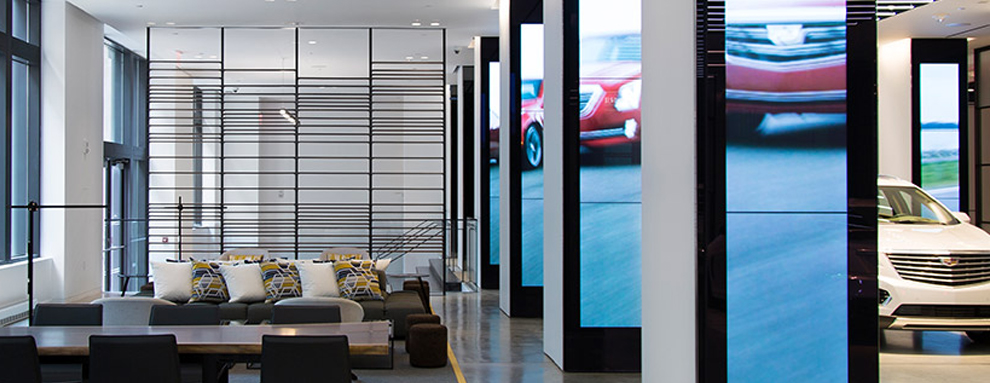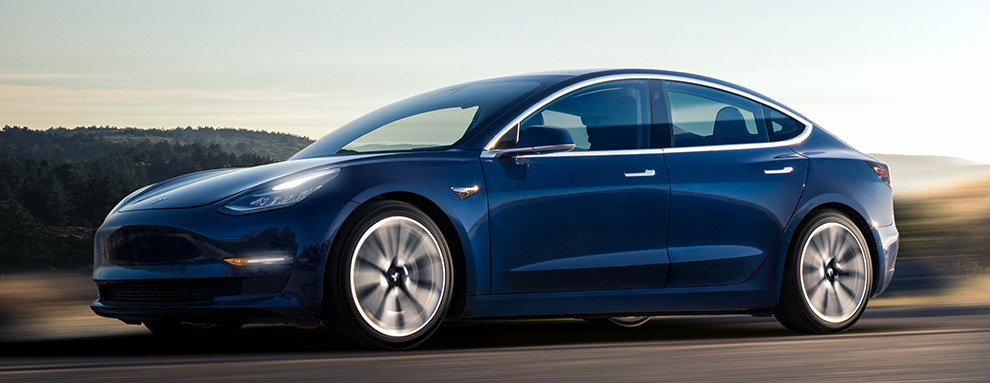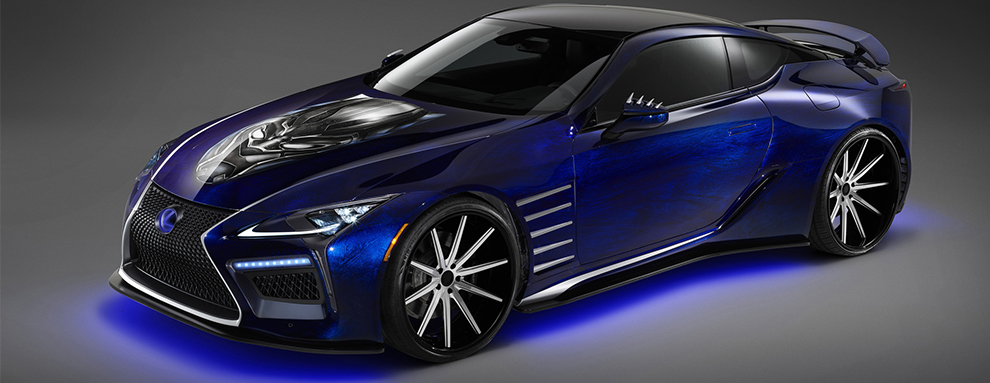If you asked millennials to turn their feelings about buying cars into a Facebook status, they’d probably say ‘it’s complicated.’”
The most populous generation in the US, who has over $200 billion in buying power, is shifting and shaping the future of automobile ownership, and a variety of reports suggests both sides of the argument are valid: millennials are gravitating toward mobility-first lifestyles, moving to different cities and ditching car ownership altogether, living off Lyft, Uber or public transit. And millennials are also leasing and buying cars.
According to an April 2016 report from Bankrate, among all age groups that were surveyed, millennials were most likely to purchase a vehicle in the following 12 months; many of them are buying SUVs to drive to their suburban homes.
The holiday season, highlighted by such catchy campaigns like “December to Remember,” “Happy Honda Days,” “Toyotathon” and “Celebrate the Season Event,” is a particularly ubiquitous time for a heavy, year-end paid push to bring each respective brand across the finish line.
Automobile marketers are meeting the millennial demand for cars in different ways. Cadillac is staying nimble by repositioning their mission to millennials with subscription services, events and experiences; Tesla is relying on word-of-mouth by ditching traditional advertising models and press altogether; Alfa Romeo is raising brand awareness through paid media and drive events; and Lexus is leveraging storytelling to relay a luxury-lifestyle proposition.
AListDaily interviewed executives from these car brands at Automobility, the annual car expo in Los Angeles, to learn how each is refining and modifying its messaging to reach millennials and have them reconsider car ownership.
Not Your Daddy’s Caddy

Cadillac is a 115-year-old brand, which for some millennials means it was born sometime between the Stone Age and Apple’s launch of the first iPhone.
Nathan Tan, Cadillac’s associate director of brand partnerships and experiences, says their century-long heritage is a great asset, but it also comes with some false familiarity as your grandfather’s favorite car.
“Millennials might think what they know Cadillac is about, but usually that notion is an outdated, nostalgic and an old-fashioned one,” Tan said. “It’s at odds with the current Cadillac, which is the future of the brand. Our job is really challenging that from a product and brand perspective of modern luxury.”
Cadillac embarked on a transformative expedition three years ago to evolve its ethos by moving global headquarters from Detroit to New York City. Tan says their Manhattan-based offices now mirror the new demographic they’re targeting.
“The move is a major inflection point in our brand’s history that will stand the test of time,” Tan said. “The move allowed us to bring in a lot of new marketing talent across the board. A lot of millennials are now working for the brand to target them—and that makes a difference in the culture and mindset every day when we walk in to work.”
“The passion points we’ve identified align well both for millennials and us as a brand. It’s an authentic and natural way for us to live out our brand positioning to dare greatly.” —Nathan Tan
To combat the notion that millennials don’t want to own anything, the brand got on the mobility train and introduced the subscription-based service Book By Cadillac in February. For an all-inclusive cost of $1,800 a month, consumers can drive any car from the Cadillac portfolio on a month-by-month basis and exchange vehicles up to 18 times a year, meaning you can take a sedan to the beach and an SUV to go skiing at your leisure. It was piloted in New York and is now available in Los Angeles, Dallas and Munich, Germany, with plans to expand aggressively in the coming years. The move to mobility is just one way Cadillac and a caravan of other car marques are combating ridesharing companies like Uber and Lyft.
“We’ve seen fantastic response to that,” Tan said. “It’s in our best interests to look at how those of types of [ridesharing] programs are performing in different markets, and it’s certainly factoring in the conversations and decision-making process. You kind of have to.”
Tan said they’ve been extremely pleased with the overwhelming interest in the subscription model since the service started, noting that 8,000 people have expressed interest in the program so far.
“This particular generation is looking for accessibility and flexibility,” Tan said. “It’s a unique and easy way for consumers to engage with the brand. One of the more exciting things is that it allows for us to get in front of new consumers. It’s a nice alternative for today’s generation who wants to enjoy luxury without having tangible things.”
Cadillac is also engaging millennial consumers outside of car dealerships and in the real world for potential point of sales with a two-pronged strategy that entails product-oriented drive experiences that engages in lifestyle passion points. The brand is shunning baby-boomer-driven verticals like golf and changing their meaning of luxury by taking a seat at the center of fashion, entrepreneurship, travel, design, culinary, arts and culture.
The strategy is highlighted by Cadillac House, a vibrant public space that unites creators and sparks conversation through a variety of events and art shows. The concept is in development to expand globally.
“The passion points we’ve identified align well both for millennials and us as a brand,” Tan said. “It’s an authentic and natural way for us to live out our brand positioning to dare greatly. The idea is that Cadillac represents innovation and entrepreneurial risk-taking and creating tangible value in the world.”
Cadillac’s approach to marketing culturally relevant events is not simply for association and sponsorship from a logo perspective. Tan and his team craft and co-create innovative partnerships with the likes of the Council of Fashion Designers of America (CFDA) to further create credibility within worlds.
“When we think about traditional luxury, really what you’re thinking about is a status symbol that says something externally,” Tan said. “The shift to modern luxury is really about your expression of your internal values and the idea of self-actualization.”
Will Tesla’s Take On Anti-Advertising Stand The Test Of Time?

Tesla first debuted the Roadster in 2008 and the Model S shortly after, and ever since, the automaker that doubles as an energy storage and solar panel manufacturer has deliberately marketed its electric vehicles differently.
Do you recall the last time seeing a Tesla commercial that got you revved up for its cars? You don’t, because Tesla does not invest in traditional advertising budgets to advocate its products. Instead, it builds brand integrity and affinity among millennials by way of word-of-mouth marketing through car owners and brand advocates. It also relies on age-tested avenues like its website.
However, according to the company’s annual report last year, Tesla spent $48 million on “marketing, promotional and advertising costs.”
The brand also does not actively engage the press—a company official only agreed to an interview with AListDaily on the condition that answers would not appear in quotes attributed to them.
According to the Tesla spokesperson, this unique medley creates passion behind their brand and sets them apart within a younger demographic of buyers.
It’s largely the reason why Elon Musk, who sits at the Mount Rushmore for the modern-day chief executive, is the public-facing front for the company. Musk, whose acumen and mystique makes fanboys out of millennials and middle-aged men alike, engages in one-to-one conversations with consumers and corresponds with the press on Twitter for public consumption. He manages his own handle and does not have a muzzle on social media, and consumers have come to appreciate such transparency.
The Tesla spokesperson believes word-of-mouth straight from the fingertips of their CEO and their devout advocates resonates with millennials because they much rather trust information delivered by a friend or family member over a message delivered through a billboard.
Tesla believes word-of-mouth marketing straight from the fingertips of their CEO and their devout advocates resonates with millennials because they much rather trust information delivered by a friend or family member over a message delivered through a billboard.
Tesla goes to market differently to begin with. The Silicon Valley-based automaker announces vehicles before actually starting production. In the case of the Model 3, it went with an unorthodox method of accepting $1,000 reservation payments from consumers to hold a place in line to get their vehicle.
Millennials don’t find the approach off-putting because the group is instinctually adaptive with new-buying habits, the Tesla spokesperson said, noting that the purchase model the brand used is also adopted among other industries.
Tesla often skips auto shows, but for consumers who were crisscrossing the floors of the Los Angeles Convention Center for Automobility this year, they had the chance to explore Tesla’s “house of the future,” an entirely solar-powered, minimal space that served as home grounds for the Model 3, Model S and Model X. The prominent appearance showcased their solar roof tile technology.
Technology, mobility and connectivity are at the core of Tesla’s products and business, the Tesla spokesperson said, and that messaging and marketing is ultimately what makes its way to its vehicles.
Alfa Romeo Is A ‘New Kid On The Block’

Alfa Romeo is another 100-plus-year-old brand trying to figure out where it stands in the marketplace.
The Italian car manufacturer reentered back into the US market in 2014 after a 20-year hiatus and wants to reestablish its stateside marque with millennials who likely have no recollection—or idea—as to what the brand is all about.
The FCA-owned Alfa Romeo’s main priority this year, and continuing into 2018, is building overall brand awareness to indicate it’s different than every other car on the block, said Katie Inderelst, head of Alfa Romeo marketing and communications.
“It’s important to have consumers understand who we are and what we stand for as a brand before they purchase a vehicle,” Inderelst said. “Every car manufacturer is trying to figure out how to reach the millennial audience. We’re trying to generate name-plate awareness and getting an understanding of where we fit in competitive car segments.”
“Every car manufacturer is trying to figure out how to reach the millennial audience. We’re trying to generate name-plate awareness and getting an understanding of where we fit in competitive car segments.” —Katie Inderelst
Inderelst said she and her team at Alfa Romeo are trying to do so tactically with a creative execution built around “Say My Name”. That includes heavily pouring more budget into paid media on digital and broadcast, but more so with presence and experiences at events like the New York City Wine & Food Festival, Monterey Car Week and establishments like Top Golf, all of which have a heavy millennial attendee rate. It gives Alfa Romeo, which is not currently considering mobility as a strategy of focus, to access and reach a clientele that doesn’t necessarily fit the hardcore car enthusiast profile.
“Our research indicates that millennials are looking to make an emotional purchase,” Inderelst said. “They see us as an expressive brand versus a practical one and are looking to tell a story behind why they purchase one of our vehicles. Our marketing team is making sure our creative has seductive and stylish messaging that we’re a distinctive brand.”
Inderelst said one of the main misnomers with millennials is that they’re always seeking acceptance from other generations.
“Millennials want to be different and make decisions on their own. They don’t want to follow the status quo—but they do like a status symbol—and a car brings that to them,” she said.
According to FCA, just 516 Alfa Romeos were sold in the US last year, and sales were down by 22 percent. At 30-years-old, Inderelst, who has been with FCA for the past seven years, believes she’s ready for the tall task of successfully reaching consumers.
“My age probably plays a role on how to reach those audiences, and provide audience-specific feedback and advice,” Inderelst said. “Our average initial buyer is between 50-to-52-years old and is still younger than that of the competitor. The early adopters have been millennials, and word-of-mouth has been just as important.”
Alfa Romeo is trying to get consumers behind the wheel of their cars to experience its racing heritage, handling as well as the “young, sporty look” to potentially separate itself in the premium category.
The brand started the year with a significant paid push at the Super Bowl with three commercials to amplify that message. The spots yielded 450,000 visits to the brand’s website that Sunday alone and continued with Inderelst seeing a substantial increase in search visits and an uptick in social media following.
Alfa Romeo’s Instagram account is tallying 20,000 followers every quarter, and since its stateside comeback, the manufacturer has added 14 points to its brand awareness index.
“The Super Bowl was a huge stepping stone and had an impact on organic growth. It was our unofficial launch that we’re really back, and we continued that marketing push,” Inderelst said. “As we compare ourselves to other brands that have also reentered, we’re seeing some great success so far.”
Lexus Lays On Its Luxury Laurels

Over the last five years, Lexus has been on a quest to shift itself into a luxury lifestyle brand around the 90 markets it caters around the globe in four major markets—US, Europe, China and Japan.
“Lexus marketing is perceived in the same way globally. The world is very small, so we want the positioning to feel the same,” said Brian Bolain, corporate manager for Lexus product marketing and marketing communications. “If you want to be known as a lifestyle brand, you need to have a consistency of messaging to be recognizable. It doesn’t help to have misunderstandings with affluent customers.”
Lexus is leveraging a luxury gameplan and trying to reach millennials who may not be thinking about cars every day by organically weaving itself into stories within lifestyle pillars—like design and craftsmanship—that millennials personally find interesting.
One way it’s trying to accomplish this is with the forthcoming film Black Panther and teaming up with Marvel Studios for the LC Inspiration Series production car and concept coupe.
“Aligning with a character they love helps put us in the conversation, and that’s all we can ask for,” Bolain said. “That’s definitely a bit of millennial marketing though and it’s a huge play for us.”
To speed up storytelling efforts, the Toyota-owned company has a longstanding short films division that doubles as a branded-content farm. Earlier this year Lexus also changed its tagline from “Pursuit of Perfection” to “Experience Amazing” during a big Super Bowl push that featured Sia, Minnie Driver and a dancer with fast and furious moves.
“Action and iconography in our marketing gives us more relevance and resonates within a younger audience,” Bolain said. “The tone of voice is very important, along with what media outlets we reach them through. The main thing with millennials who haven’t yet moved into luxury categories is to create advocacy. You need to be interesting to get them on your side.”
“That book hasn’t been written yet, but I don’t believe the notion that millennials don’t want to drive cars. Everyone wants to find independence, and cars give you that. It’s a big personal statement, especially for affluent ones.” —Brian Bolain
Bolain said millennials are not giving up the use of cars, but rather shifting how they’re acquiring the use of a vehicle. He noted that he can point to studies that speak to both sides—that millennials are both wanting and abandoning cars.
“That’s why you need vehicles and a brand that’s interesting, and we’re trying to do that with our marketing to stay at the forefront of their minds,” said Bolain. “When you see a demographic shift, it gives you permission to think differently. Millennials really want storytelling, and we want to provide them shareworthy stories with a different voice about our products. That formula seems to work really well.”
However the future plays out, Bolain wants to maintain a brand that successfully markets luxury-oriented millennials, and that for him is “a big deal.”
“That book hasn’t been written yet, but I don’t believe the notion that millennials don’t want to drive cars,” Bolain said. “Everyone wants to find independence, and cars give you that. It’s a big personal statement, especially for affluent ones. Millennials are very smart about how they spend their money. We’ll see how they choose to acquire vehicles, but it’s important for every brand to figure that out.”

